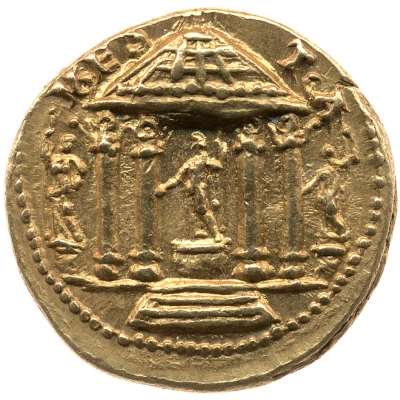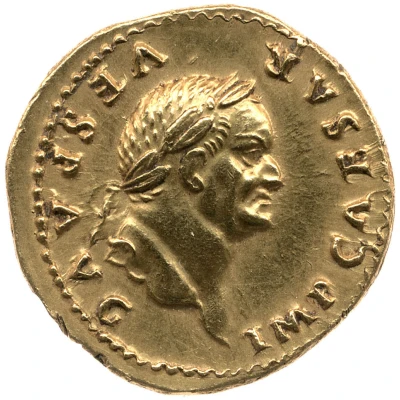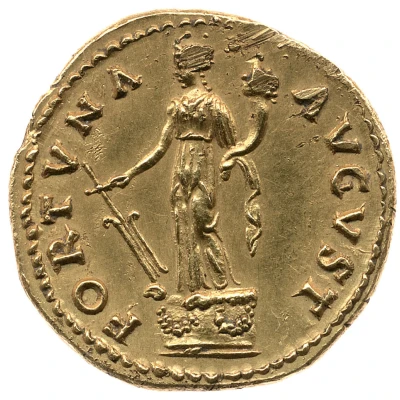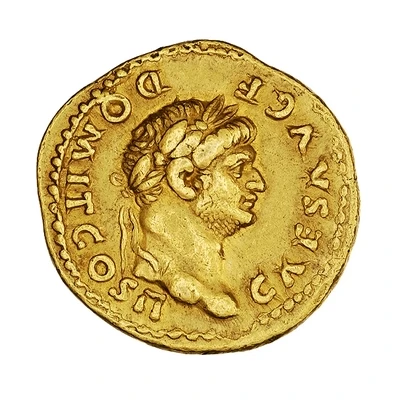
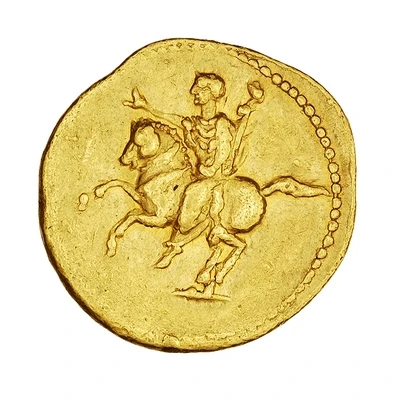

© American Numismatic Society (ANS)
Aureus - Domitian
| Gold | 7.2 g | 20.5 mm |
| Issuer | Rome › Roman Empire (27 BC - 395 AD) |
|---|---|
| Emperor | Vespasian (Titus Flavius Vespasianus) (69-79) |
| Type | Standard circulation coin |
| Years | 73-75 |
| Value | 1 Aureus = 25 Denarii |
| Currency | Denarius, Reform of Augustus (27 BC – AD 215) |
| Composition | Gold |
| Weight | 7.2 g |
| Diameter | 20.5 mm |
| Shape | Round (irregular) |
| Technique | Hammered |
| Orientation | Variable alignment ↺ |
| Demonetized | Yes |
| Updated | 2024-10-05 |
| Numista | N#249585 |
|---|---|
| Rarity index | 97% |
Reverse
Domitian riding left, holding sceptre in left hand, and raising right.
Comment
Note that RIC 540 and 679 are the same except the obverse legend on the former faces inwards and starts at the bottom left.Mass varies: 7.14–7.38 g;
Diameter varies: 20–21 mm;
Source: Online Coins of the Roman Empire (OCRE)
Interesting fact
The Aureus - Domitian (73-75) coin was used as a means of payment for Roman soldiers during the reign of Emperor Domitian. It was a gold coin that was valued at 25 silver denarii, which was a significant amount at the time. The coin was also used to pay taxes and was a symbol of wealth and status. It's interesting to note that the Aureus - Domitian (73-75) coin was part of a larger monetary system that was used throughout the Roman Empire. The Roman Empire's monetary system was based on a bimetallic standard, which means that it used two metals, gold and silver, as the basis for its currency. The Aureus - Domitian (73-75) coin was one of the many coins that were used in this system, and it played an important role in the economy of the Roman Empire.

